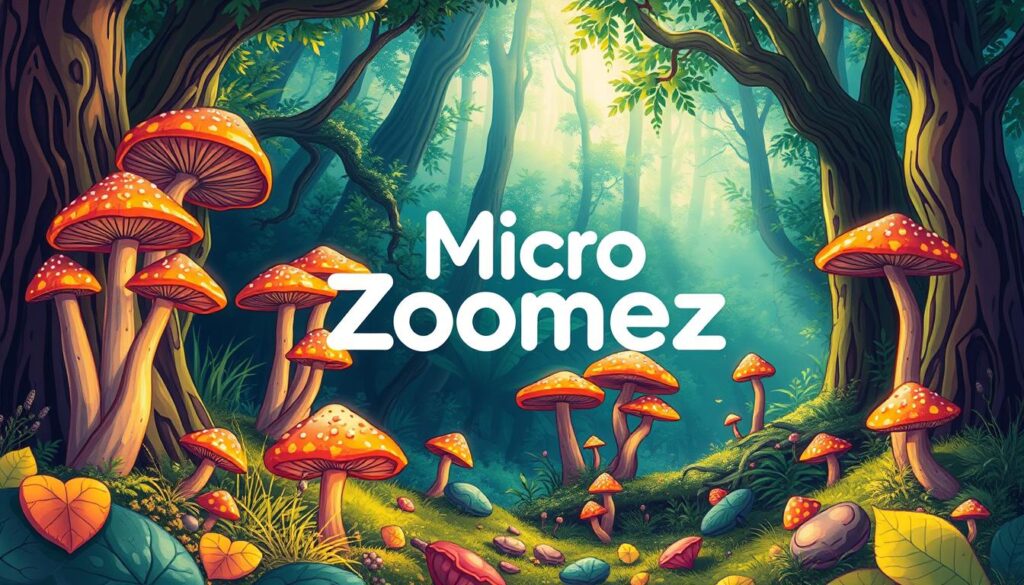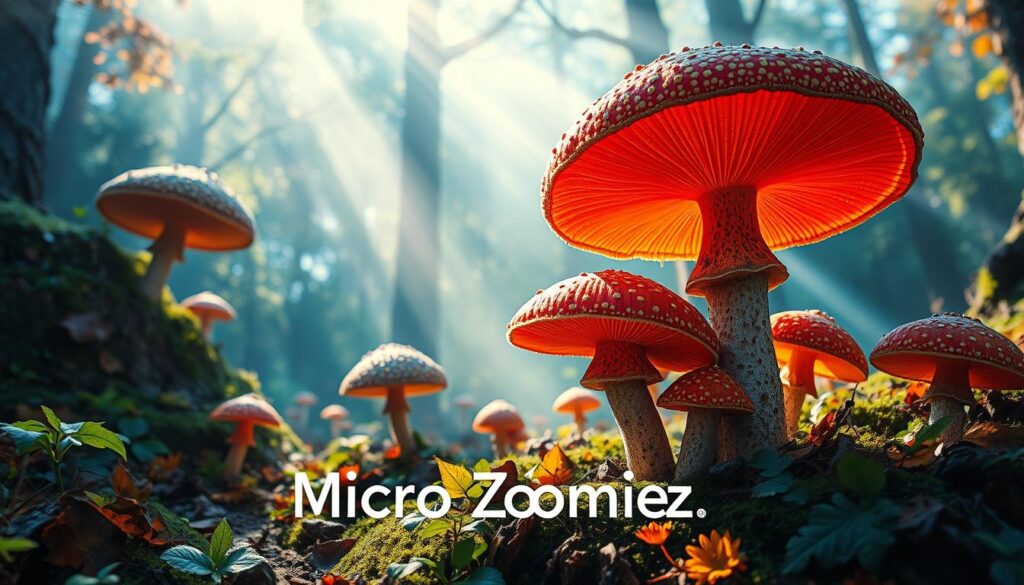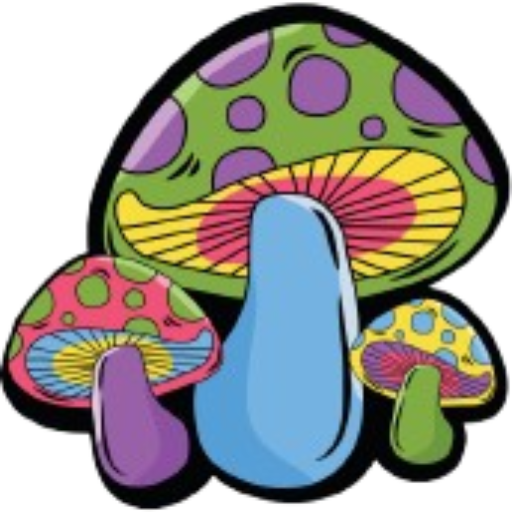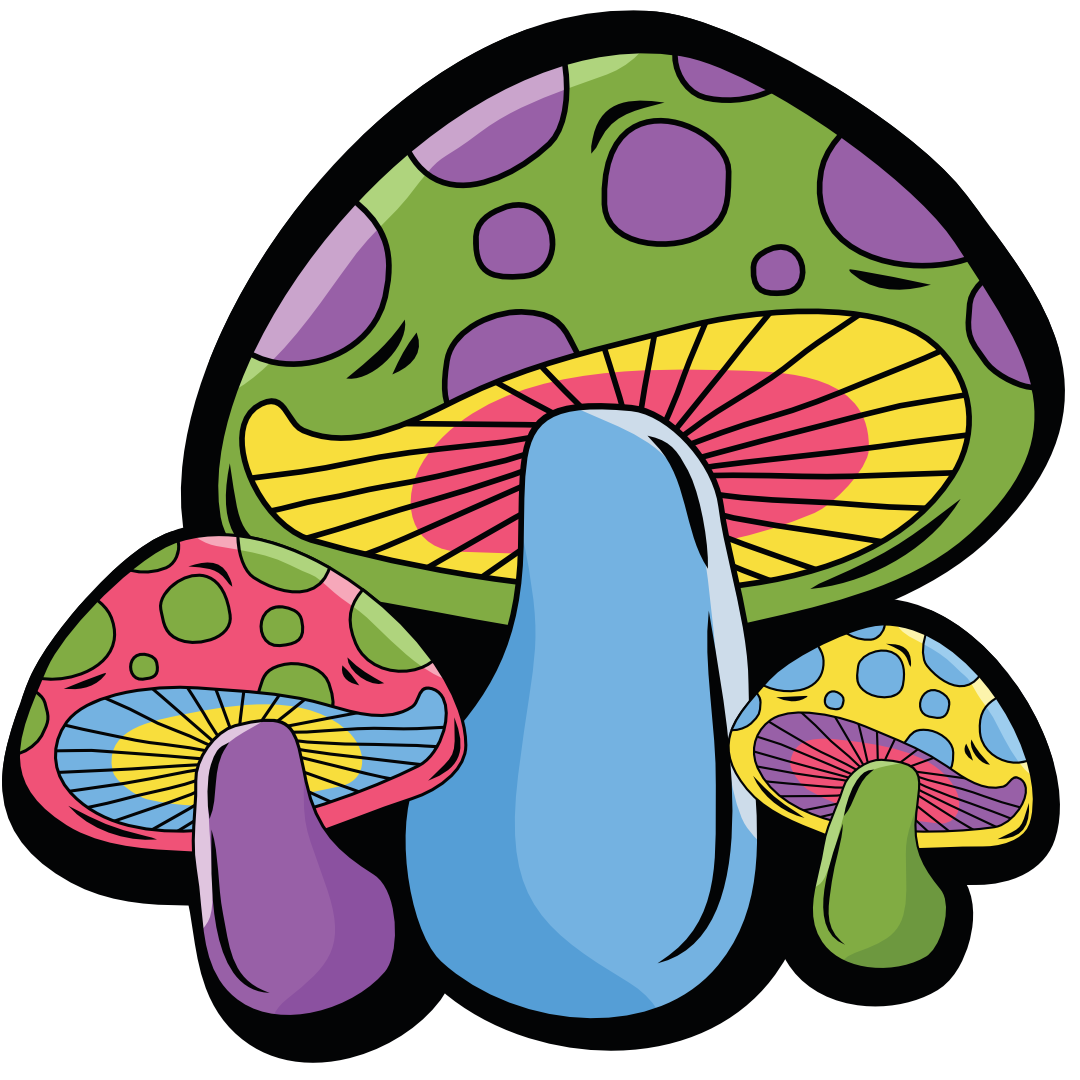Psilocybin, a naturally occurring psychedelic compound, has long been associated with the consumption of “magic mushrooms.”1 These mushrooms, of which over 200 species exist1, can induce visual and mental hallucinations, altered perception of time, and other mind-altering effects1. Psilocybin, the key active ingredient in magic mushrooms2, is quickly converted to psilocin upon ingestion, producing psychedelic experiences similar to other hallucinogens3. The use of psilocybin-containing mushrooms has a rich history, with evidence of their ritual and ceremonial use by ancient cultures dating back thousands of years3. In the 1950s, Swiss chemist Albert Hofmann isolated and identified psilocybin and psilocin3, leading to a renewed interest in the potential therapeutic applications of these compounds.
What is Psilocybin?
Psilocybin is the primary psychoactive compound found in more than 200 species of fungi, commonly known as “magic mushrooms.”4 It is a naturally occurring indole alkaloid with the chemical name [3-[2-(dimethylamino)ethyl]-1H-indol-4-yl] dihydrogen phosphate4. Once ingested, psilocybin is rapidly metabolized to psilocin, which is the compound that acts on serotonin receptors in the brain to produce the mind-altering effects4.
The Active Compound in Magic Mushrooms
Psilocybin and psilocin are classified as serotonergic psychedelics or hallucinogens, with a low potential for abuse and dependence4. The hallucinogenic effects of psilocybin typically last between 4-6 hours4. Street names for magic mushrooms include shrooms, boomers, zoomers, mushies, cubes, and others4.
Chemical Structure and Properties
Psilocybin’s chemical structure and pharmacokinetics have been extensively studied5. Research has shown the potential of psilocybin for treating depression, indicating a reduction in symptoms while preserving emotions5. However, psilocybin can also cause persistent alterations in perception or hallucinogen-persisting perception disorder (flashbacks) for weeks to years after use4.
“Psilocybin-assisted psychotherapy has demonstrated benefits for patients with life-threatening cancer and existential distress, with substantial and sustained decreases in depression and anxiety.”5
Historical Use of Psilocybin Mushrooms
The use of psilocybin-containing mushrooms dates back thousands of years, as evidenced by cave paintings and rock art found in Algeria, Spain, and Mesoamerica6. Indigenous cultures in Mexico and Central America, such as the Aztecs and Mayans, had long-standing traditions of consuming “teonanácatl” or “divine mushrooms” in spiritual and divinatory ceremonies6. The Spanish conquistadors documented the use of these mushrooms upon their arrival in the 16th century.
Ancient Cultures and Rituals
Psilocybin mushrooms have a historical use dating back to pre-Columbian times, with evidence of use in religious, divinatory, and healing practices6. Psilocybin consumption was institutionalized in many pre-modern human societies in ritual activities focused on healing, divination, and socialization7. These ancient cultures recognized the powerful effects of psilocybin and incorporated it into their spiritual and cultural traditions.
Modern Rediscovery and Research
In the 1950s, a Swiss chemist named Albert Hofmann, working for the pharmaceutical company Sandoz, isolated and identified the active compounds psilocybin and psilocin from the Psilocybe mexicana mushroom. This led to further research and the development of psilocybin-assisted psychotherapy. However, increasing legal restrictions in the 1960s and 1970s curtailed scientific research into the effects of psilocybin and other hallucinogens.
“Psilocybin and similar psychedelics, which primarily target the serotonin 2A receptor subtype, stimulate an active coping strategy response that may provide an enhanced capacity for adaptive changes through a flexible and associative mode of cognition.”7
Recent years have seen a resurgence of scientific interest in the potential therapeutic benefits of psilocybin, with ongoing clinical trials exploring its use in the treatment of various mental health conditions. The historical significance and modern rediscovery of psilocybin continue to shape our understanding of this remarkable compound.
Legal Status and Regulations
Canada’s laws regarding8 psilocybin, the active compound in magic mushrooms, are quite restrictive. The production, sale, and possession of these mushrooms are8 illegal in the country. While Canada permits individuals to possess small quantities of certain drugs due to exemptions from the federal Minister of Health, psilocybin is8 not included in these exemptions. Furthermore, Canada has8 not approved any psilocybin products for sale.
There are8 three legal ways to access magic mushrooms in Canada: through participating in clinical trials, the Special Access Program, or obtaining an exemption from the Minister of Health. Requests for these exemptions8 are evaluated based on factors such as clinical trial availability, medical condition, scientific evidence, healthcare practitioner support, public health and safety objectives, compliance with laws, and risk evaluation.
9 Psilocybin, the active ingredient in magic mushrooms, is illegal under Canadian federal law. Legal psilocybin use is restricted to scenarios where Health Canada grants exemptions under section 56 or approves requests through the Special Access Program9. Possession, trafficking, cultivation, import, and export of psilocybin remains 100% illegal in Canada without proper authorization.
9 Psilocybin was designated a prohibited controlled substance in Canada in 1974, and in 1979, possession of mushrooms containing psilocybin was briefly decriminalized but later re-criminalized in 19829. Health Canada has since granted legal access to psilocybin for therapeutic purposes through exemptions under the Controlled Drugs and Substances Act, and in January 2022, regulations under the Special Access Program were amended to allow medical professionals to request psilocybin for patients with serious or life-threatening conditions.
“In July 2022, a group of patients filed a claim against the federal government for greater access to psilocybin-assisted therapy.”9
10 Psilocin has a legal status and regulation, and psilocybin is identified with its chemical structure and any salt thereof10. Legal regulations also involve the classification of various substances such as methylphenidate, methaqualone, lysergic acid diethylamide (LSD), N,N-Diethyltryptamine (DET), N,N-Dimethyltryptamine (DMT), and N-Methyl-3-piperidyl benzilate (LBJ) among others10. Specific salts and derivatives are mentioned in relation to substances like aminorex, benzylpiperazine (BZP), and 2C-phenethylamines, and the document lists repealed laws related to certain substances, indicating changes over time in regulations.

Psilocybin’s Effects and Experiences
Psilocybin, the active compound found in “magic mushrooms,” is renowned for its ability to induce profound changes in perception, consciousness, and emotional experiences11. The effects of psilocybin can include euphoria, visual and mental hallucinations, altered sense of time, and perceived spiritual encounters11. The intensity and duration of these effects can vary depending on factors such as the species or cultivar of mushrooms, dosage, individual physiology, and the surrounding environment or “set and setting.”11
Altered Perception and Consciousness
Psilocybin acts on serotonin receptors in the brain, primarily the 5-HT2A receptors, to produce its mind-altering effects12. These effects can last for 2-6 hours, and can include a distorted sense of time, synesthesia (a blending of senses), and a heightened awareness of one’s surroundings11. Some individuals also report profound spiritual or mystical experiences during the psilocybin experience11.
Potential Therapeutic Benefits
Emerging research suggests that psilocybin may hold significant therapeutic potential, particularly in the treatment of mental health conditions12. Studies have indicated that psilocybin-assisted therapy can lead to reductions in symptoms of depression, anxiety, and addiction, with effects that can last for weeks or even months11. Additionally, psilocybin has been shown to increase cognitive and neural flexibility, which may have implications for its use in the treatment of various mental health disorders11.
“Psilocybin can produce profound changes in consciousness, perception, and emotion that have the potential to alleviate suffering and enhance well-being.” – Clinical Psychiatrist
However, it’s important to note that psilocybin can also produce adverse reactions, such as nausea, panic attacks, and in some cases, “bad trips” or “flashbacks.”11 As with any psychoactive substance, the use of psilocybin should be approached with caution and under the guidance of trained professionals12.
Dosage and Administration
Psilocybin, the active compound found in magic mushrooms, can be administered through various routes, with the oral route being the most common13. Studies have shown that the bioavailability of psilocybin when taken orally is around 52.7% ± 20.4%13. The onset of effects typically occurs within 20-40 minutes after oral administration, and the duration of the psychoactive effects can last 4-6 hours, with a range of 3-12 hours reported14.
Intravenous administration of psilocybin, on the other hand, results in a faster onset of action, with effects typically lasting 15-30 minutes13. Proper dosage and administration of psilocybin are crucial factors to consider, as they can significantly impact the user’s experience and potential therapeutic benefits14.
According to the research, the effective oral dose of psilocybin for antidepressant effects ranges from 0.045–0.429 mg/kg15. However, it’s important to note that individual responses to psilocybin can vary, and dosage should be determined and monitored by healthcare professionals1413.
“Challenging experiences during psilocybin administration, known as ‘bad trips,’ can influence therapeutic efficacy, with survey data suggesting that challenging experiences may be associated with increased well-being and perceived benefits in retrospect.”
In addition to the oral and intravenous routes, some research also explores the potential therapeutic benefits of microdosing psilocybin, where individuals take much smaller, sub-perceptual doses15. However, the efficacy and safety of microdosing psilocybin are still under investigation, and more research is needed in this area.
Risks and Adverse Reactions
While psilocybin, the active compound in magic mushrooms, has shown promise in various therapeutic applications, its use is not without risks and potential adverse reactions16. Common physical side effects include nausea, yawning, drowsiness, nervousness, and even hallucinations and psychosis16. Magic mushrooms can also induce anxiety, paranoia, and confusion in some individuals16.
The effects of psilocybin can vary greatly and are influenced by factors such as dosage, age, weight, personality, emotional state, environment, and history of mental illness16. In rare cases, the use of psilocybin-containing mushrooms has been linked to severe illness, organ damage, and even fatalities16. Additionally, the contamination of magic mushroom products with other substances, such as LSD or PCP, poses a significant risk16.
Long-term use of psilocybin can also lead to changes in personality and the occurrence of “flashbacks,” where users may relive a previous psychedelic experience16. More research is needed to fully understand the long-term effects and outcomes of magic mushroom use16.
Mental Side Effects
Psilocybin’s influence on the serotonin system in the brain can lead to a range of mental side effects, including euphoria, hallucinations, paranoia, and a distorted sense of reality and time16. In some cases, these mental effects can be profoundly unsettling, leading to a “bad trip” experience characterized by fear, anxiety, and even psychosis17.
A study analyzing self-reported negative outcomes of psilocybin users found that challenging experiences, such as anxiety, confusion, and frightening hallucinations, were not uncommon17. Additionally, individuals with pre-existing psychiatric conditions may be at an increased risk of adverse mental reactions17.

It’s important to note that the use of psilocybin in combination with other substances, such as cannabis or alcohol, can further elevate the risks of serious side effects, both physical and mental17. Responsible use and proper medical supervision are crucial when exploring the potential benefits of psilocybin18.
“A 2016 survey study focused on challenging experiences after ingesting psilocybin mushrooms, noting both acute and enduring effects.”
Recent Clinical Trials and Research
The growing interest in the potential therapeutic applications of psilocybin has led to an increase in clinical trials and research exploring its efficacy in treating various mental health conditions19. Several recent studies have investigated the use of psilocybin-assisted therapy for the treatment of depression, anxiety, addiction, and other conditions.
A randomized clinical trial published in the New England Journal of Medicine in 2021 found that a single dose of psilocybin was more effective than the antidepressant escitalopram in treating a treatment-resistant episode of major depression19. Another study, published in 2020, demonstrated the long-term benefits of psilocybin-assisted psychotherapy for patients with life-threatening cancer19.
While the evidence is promising, psilocybin is not currently an approved therapeutic product in Canada or elsewhere, and clinical trials are the most appropriate way to advance research and ensure patient safety. The therapeutic potential of psilocybin is being extensively explored, with researchers examining its ability to disrupt functional connectivity in the brain and its potential to treat conditions such as treatment-resistant depression and post-traumatic stress disorder (PTSD)1920.
“Psilocybin-induced functional connectivity changes were more than threefold greater than methylphenidate in human clinical trials.”
As psilocybin research continues to evolve, it is essential to follow the guidance of healthcare professionals and participate in clinical trials to ensure the safety and efficacy of this promising psychedelic compound20. The future of psilocybin-based therapeutic potential remains an area of active research and exploration.
Microdosing: The Trend of Taking Small Doses
In addition to the therapeutic use of psilocybin in clinical settings, there is a growing trend of “microdosing” – taking sub-perceptual doses of the compound. Proponents of microdosing claim that it can improve cognitive function, enhance creativity, and provide other benefits without the full psychoactive effects of larger doses. Studies have found differences in personality, mental health, and creativity between microdosers and non-microdosers21.
However, the safety and efficacy of microdosing psilocybin have not been extensively studied, and the long-term effects of this practice are not yet known. Experts typically define microdosing as taking 5 to 10 percent of a full psychedelic dose, which for a 155-pound person would be 1-2 milligrams of psilocybin22.
Anecdotal evidence suggests that some individuals who microdose mushrooms forage them from nearby forests, while others, like Joseph and Erin Royal, report almost immediate benefits, including a boost in mood and a heightened appreciation for beauty22.
Despite the growing popularity of microdosing, the long-term effects and safety of this practice remain uncertain. As research continues, it will be important to better understand the potential cognitive and therapeutic benefits, as well as any risks associated with this emerging trend212322.
Psilocybin and Mental Health
Psilocybin, the active compound found in certain mushrooms, has emerged as a promising therapeutic agent for the treatment of various mental health conditions24. Recent research has demonstrated the effectiveness of psilocybin-assisted therapy in relieving symptoms of treatment-resistant depression, obsessive-compulsive disorder, and easing fear and anxiety in individuals with terminal cancer24.
A groundbreaking study conducted by Johns Hopkins Medicine found that psilocybin therapy, when combined with talk therapy, significantly improved symptoms of clinical depression and provided lasting benefits for up to one year after just two doses of the compound24. Additionally, psilocybin has shown promise in treating other mental health disorders, such as smoking cessation and anorexia nervosa, leading the National Institute of Health to award Johns Hopkins a grant to further explore its potential as a smoking cessation tool24.
Potential Treatment for Depression and Anxiety
Psilocybin’s ability to induce “spiritual” experiences under safe conditions has been linked to positive changes in attitudes, moods, and behaviors, particularly increasing the personality quality of “openness.”24 Moreover, psilocybin’s capacity to enhance neuroplasticity, the brain’s ability to form new connections, contributes to its potential in breaking negative thought patterns associated with depression, anxiety, obsessive-compulsive disorder, and addiction24.
“Psilocybin can elicit ‘spiritual’ experiences under safe conditions, leading to positive changes in attitudes, moods, and behaviors, particularly increasing the personality quality of ‘openness.'”
While the research on psilocybin’s therapeutic applications is promising, Dr. Marino advocates for further investigation, particularly on the potential benefits of microdosing psilocybin24. He cites anecdotal evidence of mental health improvements and overall wellness, but emphasizes the importance of controlled settings to mitigate the risks associated with psilocybin outside of clinical environments24.
As the scientific community continues to explore the therapeutic potential of psilocybin, the future holds promising opportunities for the treatment of various mental health disorders, providing new hope for individuals struggling with conditions such as depression and anxiety242526.
Spiritual and Entheogenic Use
Beyond its potential therapeutic applications, psilocybin has a long history of use in spiritual and entheogenic (consciousness-expanding) contexts27. Entheogens, including psychedelic drugs like magic mushrooms and plants, have been utilized in religious, magical, shamanic, or spiritual practices globally to achieve transcendence through various methods such as healing, divination, meditation, and rituals27. The neologism ‘entheogen’ was coined in 1979, blending ἔνθεος meaning “full of the god” and γενέσθαι meaning “to come into being”, to describe substances inducing religious or spiritual experiences27.
In ancient Mesoamerican cultures, such as the Aztecs and Mayans, psilocybin-containing mushrooms were known as “teonanácatl” or “divine mushrooms” and were consumed to evoke revelatory visions and spiritual experiences27. Entheogens, like Ayahuasca, peyote, psilocybin mushrooms, and morning glories, have been historically used by native cultures of the Americas27.
Research indicates that psilocybin-assisted therapy, when combined with meditation and other spiritual practices, can produce enduring positive changes in psychological functioning, prosocial attitudes, and behaviors28. Mystical experiences during psilocybin sessions have been linked to enduring personal meaning in healthy volunteers and therapeutic outcomes such as reduction in substance abuse behaviors and anxiety and depression in patients with life-threatening cancer28. This suggests that psilocybin may have the potential to facilitate profound personal and spiritual transformations in users when administered in a supportive and intentional setting28.
“Psychedelics, used responsibly and with proper caution, would be for psychiatry what the microscope is for biology and medicine or the telescope is for astronomy.” – Stanislav Grof, psychiatrist and psychedelic researcher.
The use of psilocybin and other entheogens in spiritual and religious contexts highlights the potential for these substances to induce profound and transformative experiences that can have lasting impacts on individuals and their worldviews2728.
Conclusion
Psilocybin, the primary psychoactive compound found in magic mushrooms, has a long and fascinating history of use in ancient cultures for spiritual and entheogenic purposes29. In recent decades, there has been a resurgence of evidence-based research and clinical trials on psychedelic compounds, indicating a shift towards considering these substances for therapeutic use3029.
Clinical trials have yielded promising results, suggesting that psilocybin-assisted therapy may be an effective and durable treatment option for mental health conditions such as depression, anxiety, and addiction30. Psilocybin has been shown to produce significant reductions in depression and anxiety compared to a placebo30, and it has demonstrated promising results in treating addiction, which is notoriously challenging to address30.
However, the legal status of psilocybin remains a significant barrier to its widespread clinical use, as it is classified as a controlled substance in most countries3029. As research continues to explore the mechanisms of action and long-term effects of psilocybin, it will be important to navigate the complex legal and regulatory landscape to ensure that any potential therapeutic benefits can be safely and responsibly accessed by those in need3029. The future of psilocybin-based treatments will likely depend on the ongoing collaboration between researchers, clinicians, and policymakers to establish appropriate protocols and safeguards.

